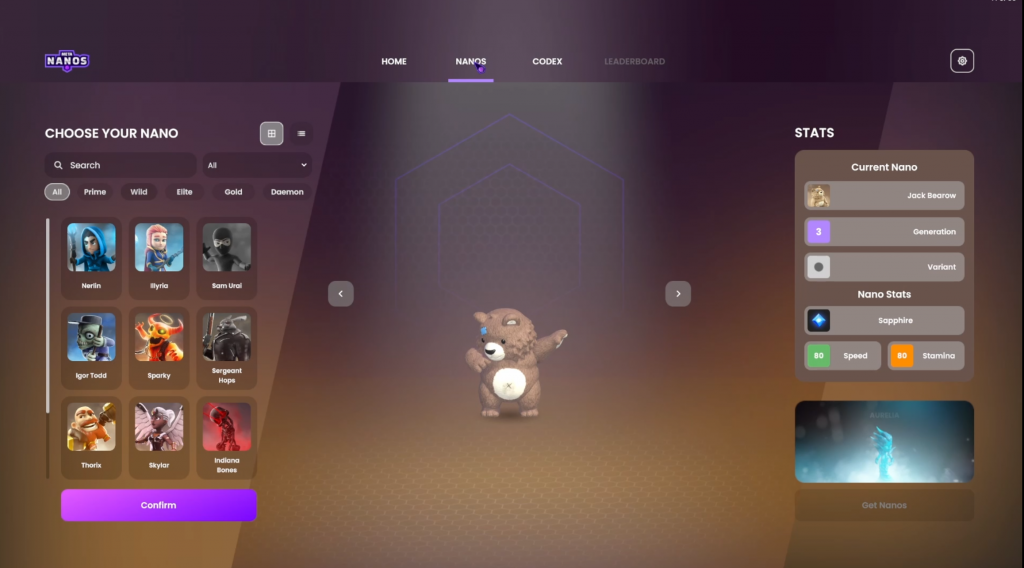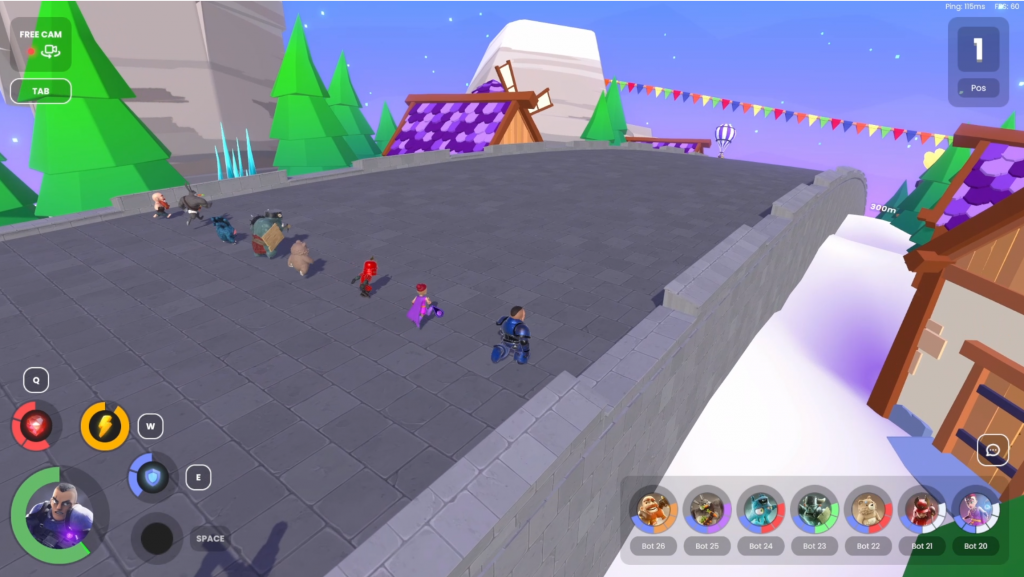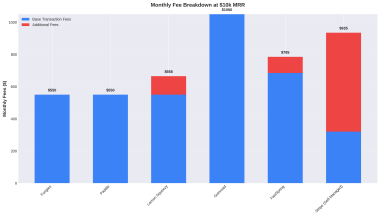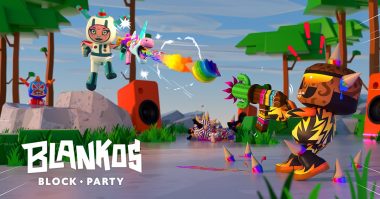Like most blockchain gaming projects, Meta Nanos has an enticing premise. The project’s whitepaper outlines it as not just a singular NFT game, but instead a collection of “collaboratively developed” free-to-play games that all use the same NFTs. A sort of metaverse within a metaverse.
The future of Meta Nanos based on its documentation is intriguing, but its future based on the functionality present at the moment is unclear. I spent some time with the husk that Meta Nanos is at the moment, and I’m here to let you know how it’s doing so far. Let’s get into it in this review of Meta Nanos.

A Humble Team
Meta Nanos is currently in development by Meta Nano Games, a small studio that consists of eleven members. Among their ranks are 3D modelers who have experience working on massive projects like Carnival Row, Minions 2, and The Mandalorian. The quality of their work is evident in the game’s presentation, which I will go over next.
The game’s developers (of which there are two) have a number of projects under each of their belts, but their progress is less apparent, as there isn’t much in terms of actual gameplay available in Meta Nanos right now. Maybe when Rumble Race is fully implemented and more Meta Nanos universe games begin development, their work can be evaluated more fully.
High-Quality Avatars
The cornerstone of Meta Nanos is built on the Nanos themselves. Each Nano is a high-quality 3D avatar that can be used all over the Meta Nanos universe. Some of these characters appear to be original creations, but then there are others that appear to be legally distinct reconstructions of well-known or recognizable characters. The most obvious of which are the Bugs Bunny/Terminator mashup Sergeant Hops, and Star Walker who looks like a space marine that walked right out of Warhammer 40K. The default Nano is a teddy named Jack Bearow, who is just delightful.
Every Nano available in this early version of Meta Nanos is promising, I would say. I can see future players wanting to collect these and use them across however many games end up under Meta Nanos’ banner, and it’s clear that maybe an inordinate amount of time was spent on these NFTs, rather than the actual games you use them in.
On Your Marks, Get Set, Huh?
At the time of this review, Meta Nanos is decidedly bare bones. There is only the Rumble Race game available to try, and even that only has the training mode ready for use. I wasn’t able to play a match with any live players (most likely because no one else is playing it), so each match I played was populated by bots. This turned out to be fine, the game isn’t designed in a way that there is very much player interaction anyways, but it’s not clear who or how many people are interested in Meta Nanos at this point just by engaging with it.

Now, for the game itself. It is listed as “training mode”, but it doesn’t make any attempts to show you how to actually play the game, and it’s not immediately clear how you play. I was able to find a light tutorial in the Codex screen of the home menu, but if you don’t visit that page first, you’re really just thrown into it.
Rumble Race is exactly what it sounds like. A set number of Nanos line up, and run alongside each other to the finish line at the end of a track. As the race plays out, players have access to a boost button with a limited duration, a shield button, and an attack button. The shield and attack mechanics have limited uses per race. There are also Mario Kart-style weapon boxes that are collected periodically that give each player a power-up they can use to try to gain an advantage.
If the description of the game sounds a little mechanical and boring, that’s because it is. Rumble Race isn’t terribly engaging, and I can’t see why someone would invest in Meta Nanos based on its current state. And again, it’s not like that level of engagement would increase if it was all live players in each match because the gameplay is so limited. There’s always plenty of time to tweak and change things in a project like this, but it’s looking a little rough right now.
Playing With Polygon
One thing Meta Nano seems to have gotten right from the start is its blockchain. The entire Meta Nano experience is built on Polygon, which is just about one of the fastest and most efficient blockchains available.
The Nanos are NFTs, which represent fully player-owned in-game items. Each Nano has a base level of value, but as players use their Nanos and earn experience, they also gain value. At least, that is what the whitepaper outlines. I wasn’t able to personally test this functionality.

In addition to buying and training Nanos, Meta Nanos will also allow players to earn currency just by playing the various games slated to be available, trade their Nanos, and even create new ones by combining two different Nanos. All pretty standard NFT game mechanics you would expect.
Conclusion
Meta Nanos has only been in development for less than a year at this point, so the shortcomings I came across in this review might not even be there in a few months. These projects take multiple years, and the skeleton of Meta Nanos is already promising enough. The only “game” currently available in it is pretty weak, but the entire project is built on the concept of having many games of all different genres, which should work in its best interest.
The Nano NFTs are some of the most compelling I’ve seen so far, even if some of them are slightly derivative. Overall, it really is too early to tell how successful Meta Nanos will be, but if the Nanos themselves interest you it is worth checking out.






